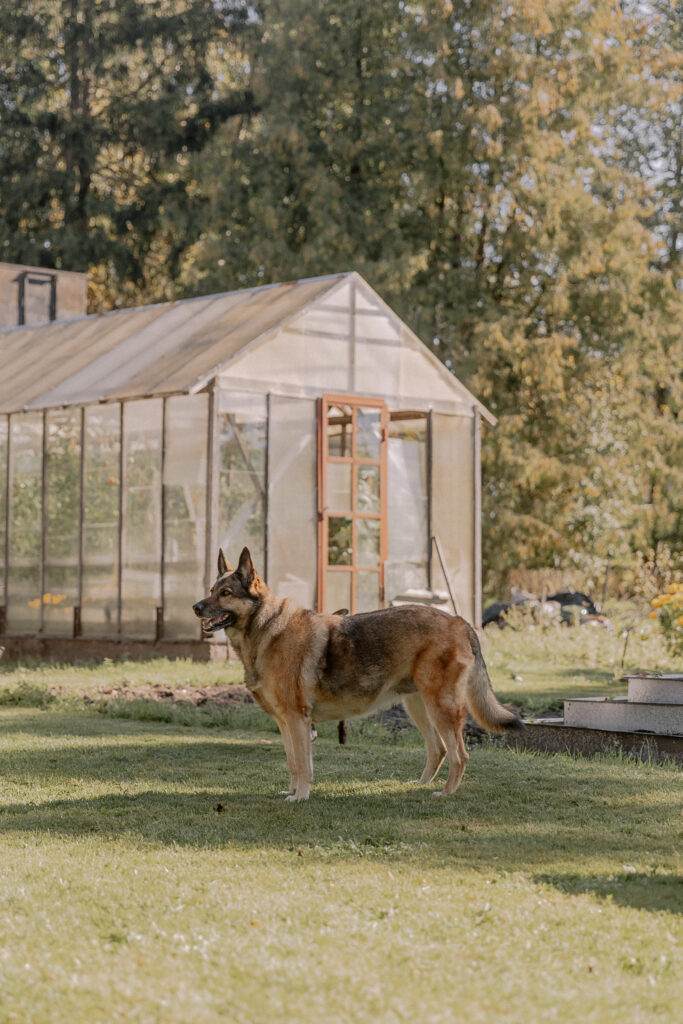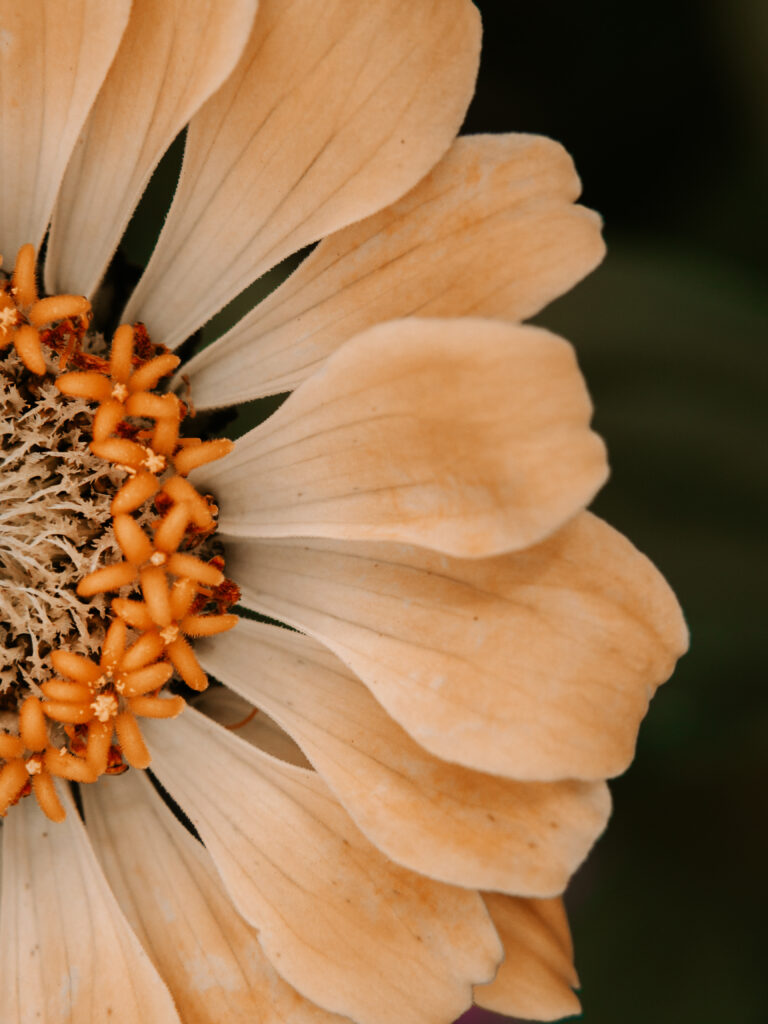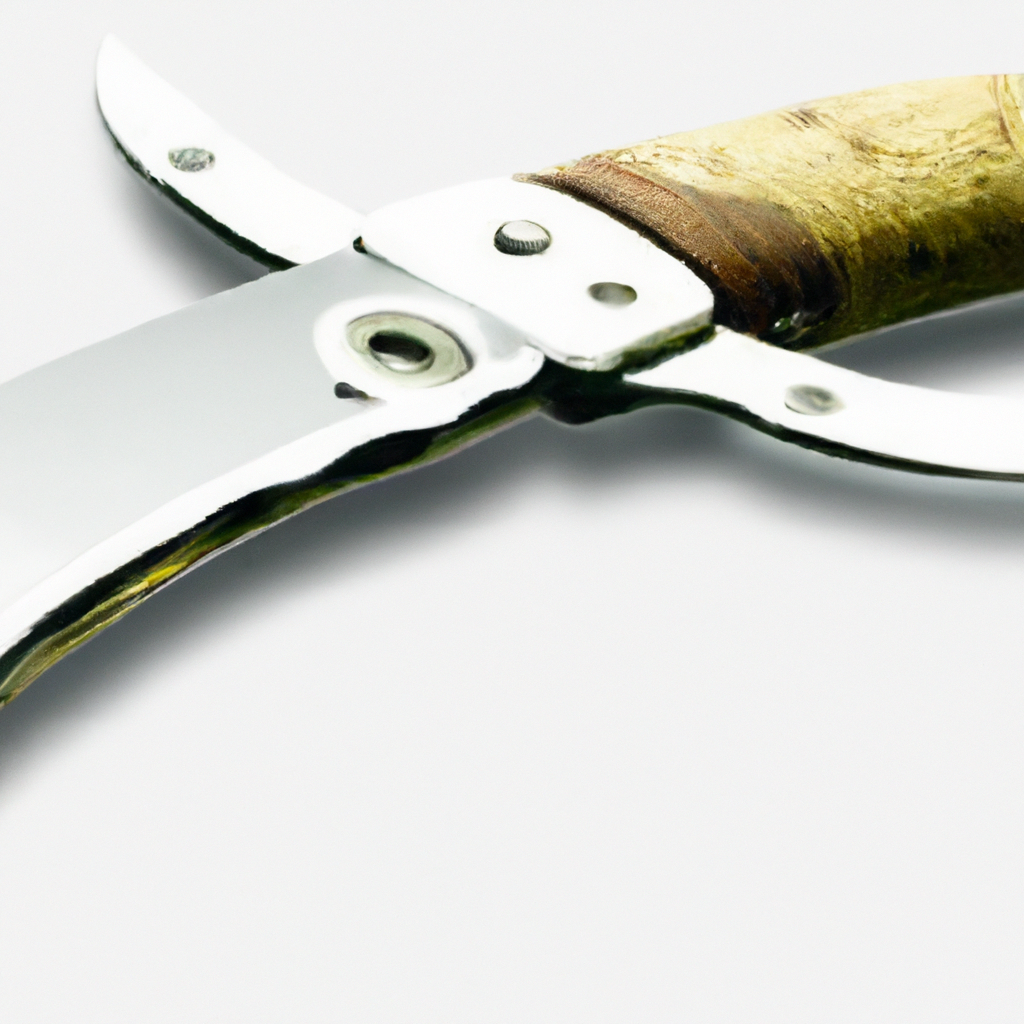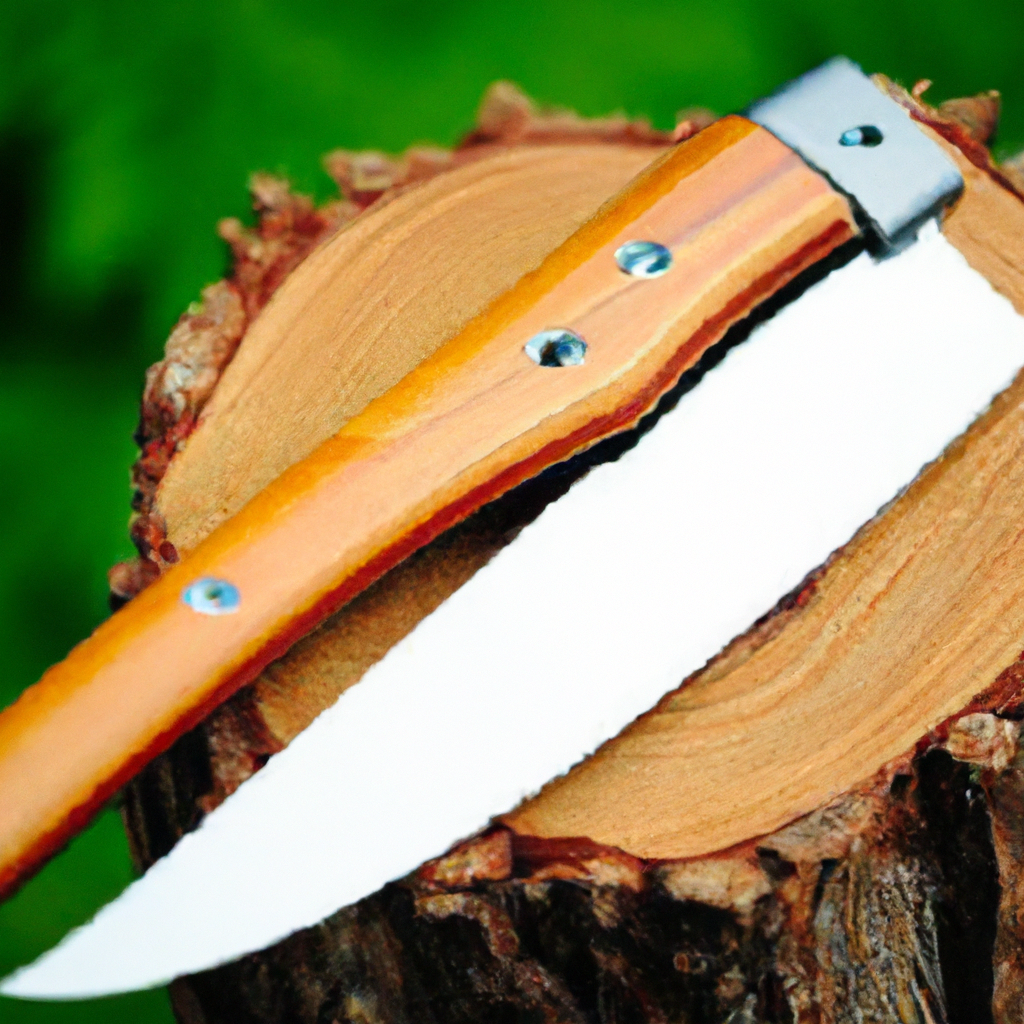Are you a passionate gardener looking to take your gardening game to the next level? Look no further! In this ultimate guide, we will provide you with invaluable insights and tips on choosing the best knives for gardening. Whether you’re a beginner or a seasoned green thumb, finding the right knife can make all the difference in your gardening experience. From pruning to harvesting, we’ve got you covered. Get ready to unlock the secrets behind the perfect gardening tool and prepare to elevate your gardening skills to new heights.

1. Types of Knives
Gardening requires a variety of tools to get the job done, and knives are no exception. There are several different types of knives specifically designed for gardening purposes. Whether you need to prune branches, harvest fruits and vegetables, or weed your garden, there is a knife out there to suit your needs. Let’s explore some of the most common types of gardening knives.
1.1 Pruning Knife
A pruning knife is an essential tool for any gardener. This type of knife features a sharp, pointed blade that is perfect for cutting and trimming plants. Pruning knives come in various sizes and shapes, allowing you to find the perfect one for your needs. They are ideal for removing dead or diseased branches, shaping plants, and performing delicate pruning tasks.
1.2 Budding Knife
A budding knife is specifically designed for grafting and budding plants. This type of knife features a straight, narrow blade with a sharp, curved tip, which allows for precise cuts. Budding knives are used to remove buds or shoots from one plant and transfer them to another, creating a new plant.
1.3 Harvesting Knife
When it comes time to harvest your ripe fruits and vegetables, a harvesting knife is the perfect tool for the job. These knives often have a curved blade, making it easier to cut through stems and branches without damaging the plant. Harvesting knives are a must-have for gardeners who enjoy fresh produce straight from their garden.
1.4 Weeding Knife
Weeding can be a tedious task, but with a weeding knife, it becomes much easier. This type of knife typically has a long, narrow blade with a sharp edge on one side. Weeding knives are excellent for removing stubborn weeds, digging out roots, and breaking up compacted soil. Their narrow design allows for precise weeding in tight spaces.
1.5 Sickle
A sickle is a traditional farming tool that is still widely used in gardening today. This tool consists of a curved blade with a handle, allowing you to easily cut through plants and grass. Sickles are commonly used for cutting grass, clearing overgrown areas, and harvesting crops.
1.6 Machete
If you have a large garden or need to clear dense vegetation, a machete is your go-to tool. This long, wide blade is perfect for chopping through thick underbrush and removing unwanted plants. Machetes are commonly used for clearing paths, removing tree branches, and cutting large plants.
1.7 Hori Hori Knife
Originating from Japan, the hori hori knife is a versatile gardening tool. It features a straight, sharp blade with a serrated edge on one side and a concave edge on the other. Hori hori knives are perfect for digging, cutting through roots, planting bulbs, and even measuring soil depth.
1.8 Hand Trowel
While not technically a knife, a hand trowel is a vital tool for any gardener. This handheld tool features a small, flat blade that is perfect for digging, transplanting, and weeding. Hand trowels are compact and easy to use, making them a must-have for every gardener’s toolbox.
1.9 Transplanting Knife
Transplanting plants requires careful precision, and a transplanting knife is just the tool for the job. This knife typically has a narrow, pointed blade that makes it easy to dig and remove delicate plants without damaging their roots. Transplanting knives are excellent for moving seedlings or small plants to new locations.
1.10 Folding Saw
Sometimes, a knife alone is not enough to tackle larger branches or trees. That’s where a folding saw comes in handy. This folding tool features a serrated blade, allowing you to cut through thicker branches and even small trees. Folding saws are portable, easy to use, and perfect for any pruning or cutting job in your garden.
2. Blade Material
The material used in the construction of a knife’s blade significantly affects its performance and durability. Here are some of the most common blade materials used in gardening knives:
2.1 Stainless Steel
Stainless steel is a popular choice for gardening knives due to its excellent resistance to rust and corrosion. These blades are easy to maintain and can withstand exposure to moisture without deteriorating. Stainless steel blades are typically strong, durable, and able to hold a sharp edge for prolonged periods.
2.2 Carbon Steel
Carbon steel blades are known for their exceptional sharpness and edge retention. They require a bit more maintenance compared to stainless steel blades, as they are more prone to rusting. However, with proper care and regular oiling, carbon steel blades can provide excellent performance and cutting ability.
2.3 High Carbon Stainless Steel
High carbon stainless steel blades combine the best features of stainless steel and carbon steel. These blades offer excellent corrosion resistance and hold an edge well while still maintaining the durability and strength of carbon steel. High carbon stainless steel blades are a versatile option for gardeners who want the best of both worlds.
2.4 Titanium
Titanium blades are known for their exceptional lightness and strength. They are highly resistant to rust and corrosion, ensuring the longevity of the blade. Titanium blades also have excellent flexibility, making them less prone to breakage compared to other materials. While titanium blades can be more expensive, they are a worthwhile investment for serious gardeners.
2.5 Ceramic
Ceramic blades have gained popularity in recent years due to their extreme sharpness and resistance to wear. These blades are incredibly hard, which allows for precise and clean cuts. Ceramic blades are also lightweight and resistant to rust, making them a great option for gardeners looking for a durable and low-maintenance knife.
3. Blade Design
The design of a knife’s blade plays a crucial role in its functionality and intended use. Here are some of the most common blade designs you’ll come across when choosing a gardening knife:
3.1 Straight Edge
A straight-edge blade is the most common and versatile blade design. It features a flat edge that runs straight from the handle to the tip, allowing for easy slicing and cutting. Straight-edge blades are perfect for general-purpose tasks, such as pruning, harvesting, and cutting through plant material.
3.2 Serrated Edge
A serrated-edge blade has teeth-like serrations along the cutting edge. This type of blade is ideal for cutting through tough materials, such as woody stems or thick branches. Serrated-edge blades provide extra grip and precision when cutting, making them suitable for sawing motions and tasks that require more force.
3.3 Scalloped Edge
A scalloped-edge blade features rounded indentations along the cutting edge. This design reduces friction and prevents food or plant material from sticking to the blade, making it ideal for slicing tasks. Scalloped-edge blades are commonly used in the kitchen, but they can also be useful in the garden for tasks that require precise slicing and minimal tearing.
3.4 Tapered Blade
A tapered blade gradually narrows from the handle towards the tip. This design allows for enhanced control and precision when cutting or slicing. Tapered blades are often found on chef’s knives but can also be useful in the garden for tasks that require controlled cutting and minimal damage to the plant material.
3.5 Curved Blade
A curved blade is characterized by its arched shape, which enhances the slicing ability of the knife. This design is useful when making precise cuts or navigating around curved surfaces. Curved blades are commonly found on pruning knives and harvesting knives, as they allow for controlled cuts while minimizing the risk of damaging the plant.
4. Handle Material
The material used in the construction of a knife’s handle greatly affects its comfort, grip, and durability. Here are some common handle materials for gardening knives:
4.1 Wood
Wooden handles have a timeless appeal and provide a comfortable, natural grip. They are often aesthetically pleasing and offer a warm and traditional feel. However, wood can be susceptible to moisture and may require regular maintenance to prevent swelling or cracking.
4.2 Plastic
Plastic handles are popular for their affordability, durability, and resistance to water. They are lightweight and easy to clean, making them practical for outdoor use. Plastic handles often feature textured or rubberized grips, providing a secure and comfortable hold even when wet.
4.3 Rubber
Rubber handles offer excellent grip and shock absorption, making them comfortable to use for extended periods. They provide a secure hold even in wet conditions, making them suitable for gardening tasks that involve water or moisture. Rubber handles are also known for their durability, resistance to UV rays, and ease of cleaning.
4.4 Composite
Composite handles are made by combining different materials, such as wood and plastic or rubber and plastic. These handles offer the best of both worlds, often featuring the durability of plastic with the aesthetics and comfort of wood or rubber. Composite handles can provide an ergonomic grip while maintaining the necessary strength and versatility for gardening tasks.
4.5 Metal
Metal handles are less common in gardening knives, but they do offer unique advantages. They provide excellent durability, strength, and a solid grip. However, metal handles can be heavy, which may not be ideal for prolonged use or for those who prefer lighter tools.

5. Blade Length
The length of a knife’s blade can greatly impact its performance and suitability for specific tasks. Here are the three main blade length categories for gardening knives:
5.1 Short Blade
Short-bladed knives typically measure between 2 to 4 inches in length. They are perfect for tasks that require precision and control, such as delicate pruning, cutting herbs, or trimming small plants. Short-bladed knives are easy to maneuver in tight spaces and provide enhanced accuracy for detailed work.
5.2 Medium Blade
Medium-bladed knives generally range from 4 to 7 inches in length. This size offers a good balance between precision and versatility, making them suitable for a wide range of gardening tasks. Medium-bladed knives are perfect for pruning larger plants, harvesting fruits and vegetables, and general-purpose cutting and slicing.
5.3 Long Blade
Long-bladed knives typically measure over 7 inches in length. They are primarily used for tasks that require extra reach, such as clearing thick vegetation or cutting woody stems. Long-bladed knives are ideal for more heavy-duty work and can make quick work of large plants, branches, and even small trees.
6. Blade Thickness
The thickness of a knife’s blade can affect its overall strength, durability, and cutting ability. Here are the three main blade thickness categories for gardening knives:
6.1 Thin Blade
Thin-bladed knives are typically less than 2mm thick. They excel at tasks that require precision, delicate cutting, and clean, accurate slices. Thin blades are perfect for tasks like grafting, budding, or trimming small plants where finesse is required.
6.2 Medium Blade
Medium-bladed knives generally range from 2 to 3mm in thickness. This thickness strikes a balance between strength and precision, making them versatile for a wide range of gardening tasks. Medium blades can handle pruning, harvesting, and general-purpose cutting with ease.
6.3 Thick Blade
Thick-bladed knives are typically over 3mm thick. They offer more strength and durability, making them suitable for heavy-duty tasks and cutting through thick branches or woody stems. Thick blades can withstand greater force and are an excellent choice for more demanding gardening work.

7. Blade Shape
The shape of a knife’s blade greatly influences its functionality and intended use. Here are some common blade shapes you’ll come across when choosing a gardening knife:
7.1 Drop Point
The drop point blade features a convex curve that drops from the spine of the blade to the tip, creating a strong and versatile shape. This blade shape provides excellent control and is ideal for general gardening tasks, such as pruning, cutting, and slicing.
7.2 Clip Point
A clip point blade is characterized by a concave cutout near the tip, creating a thinner, more delicate point. This design allows for precise piercing and is often used for tasks that require detailed work, such as grafting or budding.
7.3 Spear Point
The spear point blade is symmetrical and tapers to a point in both directions. This design provides excellent control and piercing ability, making it suitable for a range of gardening tasks, including pruning, cutting, and slicing.
7.4 Tanto Point
The tanto point blade features a straight front edge and a secondary bevel that meets the primary edge at an angle. This design provides increased strength and is useful for tasks that require a strong, durable tip, such as cutting through tough plant material or digging.
7.5 Sheepsfoot
A sheepsfoot blade has a straight cutting edge and a rounded, blunt tip, creating a distinctive shape. This design is safe to use and minimizes the risk of accidental punctures, making it ideal for tasks that require controlled cutting or pruning near delicate plants.
7.6 Hawkbill
The hawkbill blade curves outward dramatically, resembling the beak of a hawk. This design is primarily used for pulling or cutting through material, making it useful for tasks such as pruning, removing suckers, or trimming plant material.
7.7 Wharncliffe
The wharncliffe blade has a straight cutting edge and a spine that curves downward to meet the edge. This design provides excellent control and precision, making it ideal for detailed cutting, grafting, or budding.
8. Safety Features
When it comes to handling a knife, safety should always be a priority. Here are some common safety features found in gardening knives:
8.1 Locking Mechanism
A locking mechanism ensures that the blade remains securely in place during use, preventing accidental closure and potential injuries. Look for knives with reliable locking mechanisms, such as liner locks or frame locks, to ensure safe and secure operation.
8.2 Finger Guard
A finger guard is a small extension on the handle that sits between the blade and the handle’s grip. It acts as a barrier to protect your hand from accidentally slipping onto the blade during use, reducing the risk of injuries.
8.3 Non-Slip Handle
A non-slip handle provides a secure grip, even in wet or slippery conditions. Look for knives with textured or rubberized handles that offer excellent grip and control, ensuring safe and comfortable use.
8.4 Blade Cover
A blade cover is a protective sheath or case that covers the knife blade when not in use. It helps prevent accidental cuts or damage when storing or transporting the knife. Utilizing a blade cover is an essential safety measure, particularly if you frequently carry your gardening knife with you.

9. Ergonomics
Ergonomics play a vital role in the overall usability and comfort of a gardening knife. Here are some key ergonomic factors to consider when choosing a knife:
9.1 Comfortable Grip
A comfortable grip is crucial for extended use without causing hand fatigue or discomfort. Look for knife handles that fit comfortably in your hand and have a shape or texture that provides excellent grip and control.
9.2 Weight
The weight of a knife can significantly impact its usability and control. Consider the type of gardening tasks you’ll be undertaking and choose a knife with a weight that complements your needs. Lighter knives are generally more comfortable for extended use, while heavier knives can provide additional cutting power for tougher jobs.
9.3 Balance
A well-balanced knife ensures optimal control and maneuverability. Look for knives with a balanced distribution of weight between the handle and the blade, allowing for precise and controlled movements.
9.4 Handle Shape
Some knives feature handle shapes specifically designed to fit the natural contours of the hand, ensuring a comfortable grip and minimizing hand strain. Consider your hand size and personal preferences when selecting a knife with the appropriate handle shape.
10. Price Range
Finally, let’s discuss the different price ranges for gardening knives. The price of a knife can vary depending on factors such as materials, construction, brand, and quality. Here are three general price ranges to consider:
10.1 Budget-Friendly
Budget-friendly knives are affordable options that still provide decent performance and durability. These knives are suitable for occasional or light gardening tasks and are a good choice for beginners or those on a tight budget.
10.2 Mid-Range
Mid-range knives offer a balance between affordability and higher-quality materials and construction. These knives provide good performance, durability, and often come with additional features. They are suitable for regular gardening tasks and are a popular choice among amateur gardeners.
10.3 High-End
High-end knives are the premium options in terms of quality, performance, and construction. These knives are made with top-of-the-line materials, provide exceptional durability, and often come with advanced features. They are suitable for professional gardeners or enthusiasts who demand the best tools for their gardening needs.
Choosing the Best Knives for Gardening
When it comes to choosing the best knives for gardening, there are several factors to consider. The type of knife, blade material, design, handle material, blade length, thickness, shape, safety features, ergonomics, and price range all play a role in determining the ideal knife for your gardening needs.
Consider the specific gardening tasks you regularly undertake and match the knife features to those tasks. A pruning knife may be essential if you have many shrubs or trees, while a sickle may be more suitable for clearing overgrown areas. Take into account your preferences, comfort, and budget to find the perfect knife that will make your gardening experience more enjoyable and efficient.
Remember that proper maintenance and care are essential to ensure the longevity and optimal performance of your gardening knife. Regular cleaning, lubrication, and storage in a safe and dry place will help keep your knife in top condition for years to come.
Now armed with knowledge about the different types of knives, blade materials, designs, handle materials, blade lengths, thicknesses, shapes, safety features, ergonomics, and price ranges, you are ready to choose the best knives for all your gardening needs. Happy gardening and happy cutting!

